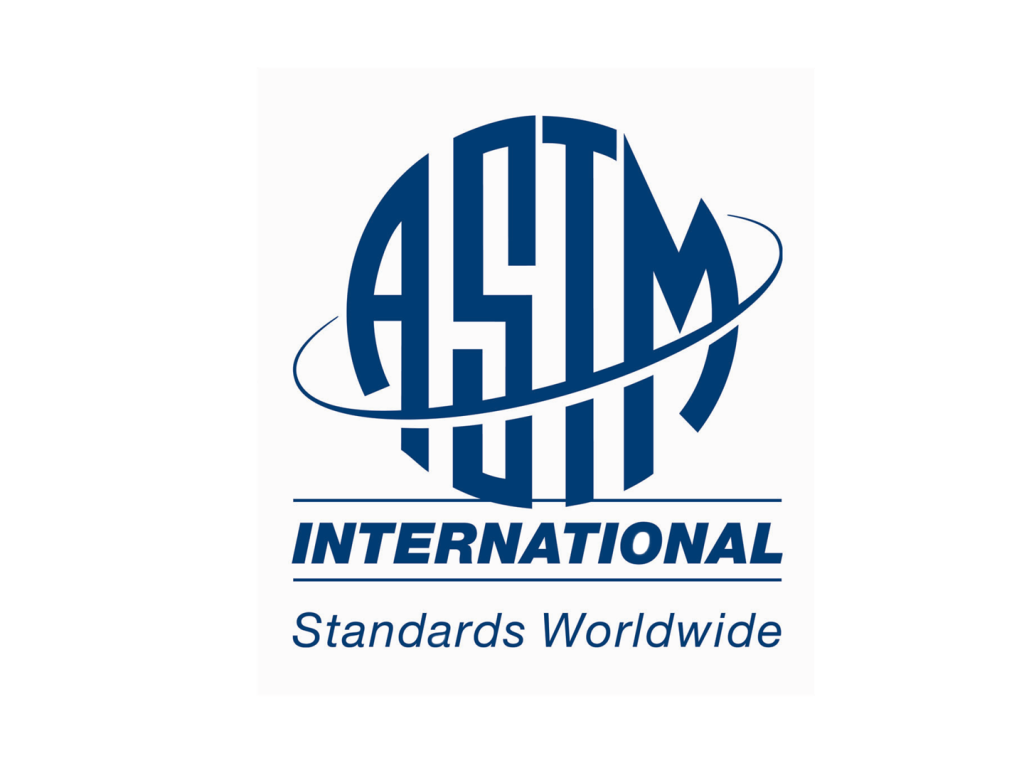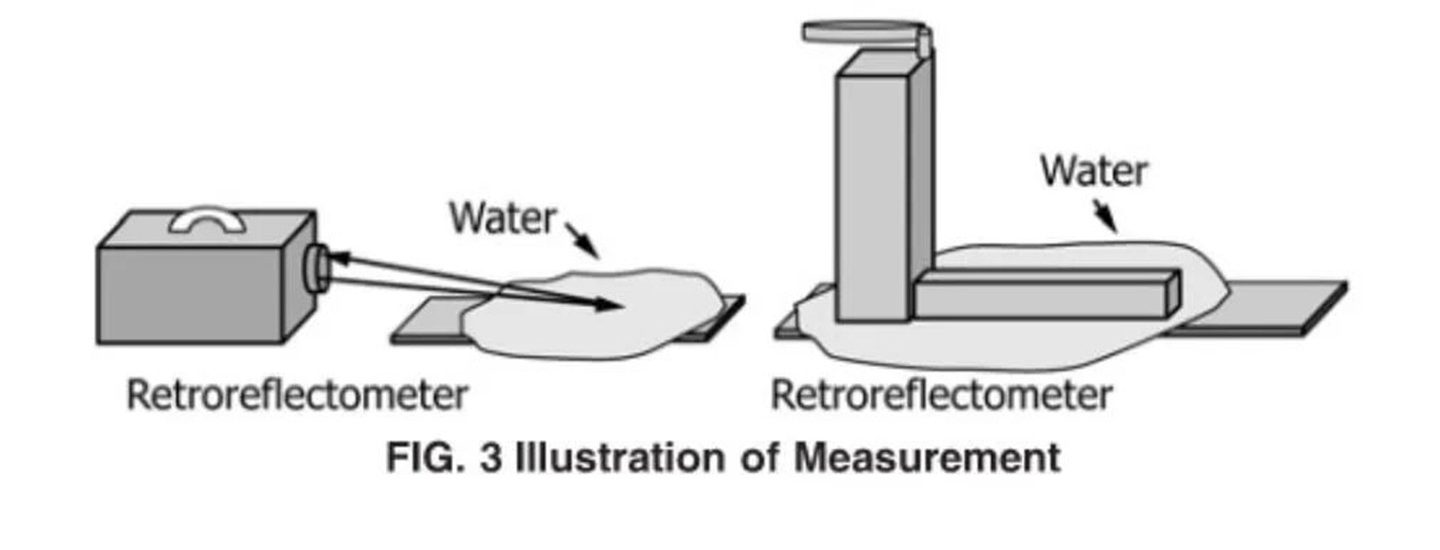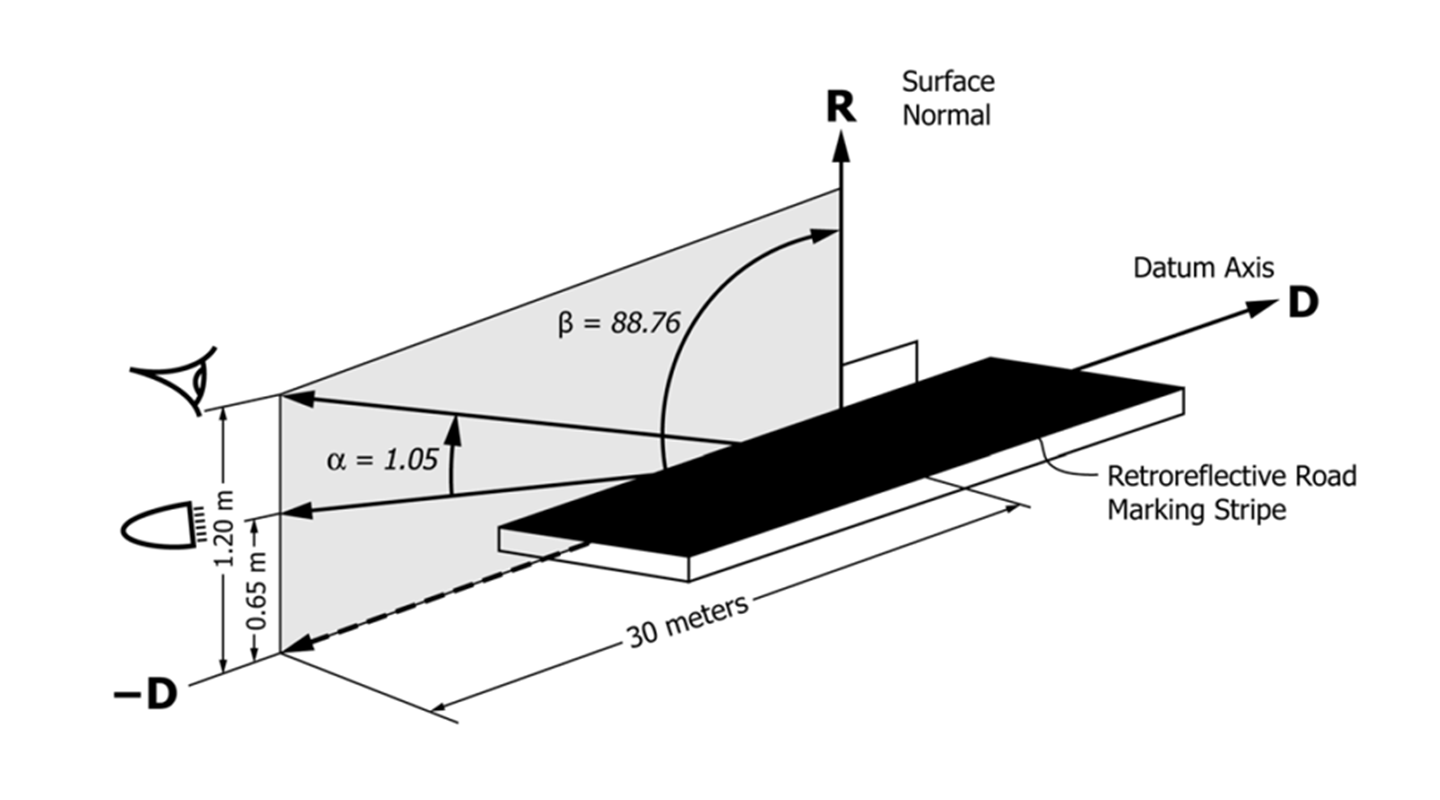
ASTM E2177-01
Standard Test Method for Measuring the Coefficient of Retroreflected Luminance (RL) of Pavement Markings in a Standard Condition of Wetness
This standard is issued under the fixed designation E 2177; the number immediately following the designation indicates the year of original adoption or, in the case of revision, the year of last revision. A number in parentheses indicates the year of last reapproval. A superscript epsilon (e) indicates an editorial change since the last revision or reapproval.
Scope
1.1 This test method covers the measurement of the wet retroreflective (RL) properties of horizontal pavement marking materials, such as traffic stripes and road surface symbols, using a portable or mobile retroreflectometer that can be placed on or before the road marking to measure the retroreflection at the prescribed geometry.
1.2 This method of measuring the wet retroreflective properties (RL) of pavement markings measures the wet retroreflectivity in a standard condition of wetness (see Fig 1).
1.2.1 Discussion – This test condition typically exists (1) after a rainfall has ended and the pavement markings are still wet or (2) as the markings are wet from dew or humidity.
1.3 Retroreflective performance obtained with this test in conditions of wetness does not necessarily relate to how markings perform in conditions of rain, that is, as markings are being rained upon.
Note 1 – Test Method E 2176 defines a method to use to measure the performance of pavement markings in conditions of simulated rain.
1.4 This test method specifies the use of portable or mobile reflectometers that can measure pavement markings in accordance with Test Method E 1710. The entrance and observation angles required of the retroreflectometer in this test method are commonly referred to as “30 meter geometry.”
1.5 This standard does not purport to address all of the safety concerns, if any, associated with its use. It is the responsibility of the user of this standard to establish appropriate safety and health practices and determine the applicability of regulatory limitations prior to use.

2. Referenced Documents
2.1 ASTM Standards:
D 6359 Specification for Minimum Retroreflectance of Newly Applied Pavement Marking Using Portable HandOperated Instruments
E 691 Practice for Conducting an Interlaboratory Study to Determine the Precision of a Test Method
E 965 Test Method for Measuring Pavement Macrotexture Depth Using a Volumetric Technique5
E 1710 Test Method for Measurement of Retroreflective Pavement Marking Materials with CEN-Prescribed Geometry Using a Portable Retroreflectometer
E 2176 Test Method for Measuring the Coefficient of Retroreflected Luminance (RL) of Pavement Markings in a Standard Condition of Continuous Wetting
2.2 Other Standard:
CEN–EN 1436 Road Marking Materials—Road Marking Performance for Road Users

4. Significance and Use
4.1 The nighttime performance of pavement markings is determined by the coefficient of retroreflected luminance, RL, be it dry or wet, and depends on the materials used, age, and wear pattern. These conditions shall be observed and noted by the user.
4.2 Under the same conditions of headlight illumination and driver’s viewing, larger values of RL correspond to higher levels of visual performance at corresponding geometry.
4.3 The pavement marking’s measured performance in the standard condition of wetness is used to characterize the performance of the marking on the road when wet.
4.4 Newly installed pavement markings may have a natural surface tension or release agents that prevent wetting of the product by water. The water will tend to“bead up”on the marking. This“non wetting”condition is usually short lived. Pavement markings that have been on the road for one month prior to testing usually do not exhibit this non-wetting phenomenon. (Warning–This phenomenon produces an interference when assessing the wet characteristics of a pavement marking. Attempts to measure markings with this surface“non-wetting”or“beading”of the water may give higher values.)

4.5 The retroreflectivity, RL, of pavement (road) markings degrades with traffic wear and requires periodic measurement to ensure that sufficient line visibility is provided to drivers. For example see Specification D 6359 for dry retroreflectivity requirements.
4.6 For a given viewing distance, measurements of RL made with a retroreflectometer having a geometry corresponding to that viewing distance are a good indicator of the visual ranking
of the material measured.
4.7 As specified by Test Method E 1710, the measurement geometry of the instrument is based on a viewing distance of 30 m, an eye height of 1.2 m and a headlight mounting height of 0.65 m.
4.8 It shall be the responsibility of the user to employ an instrument having the specified observation and entrance angles.

